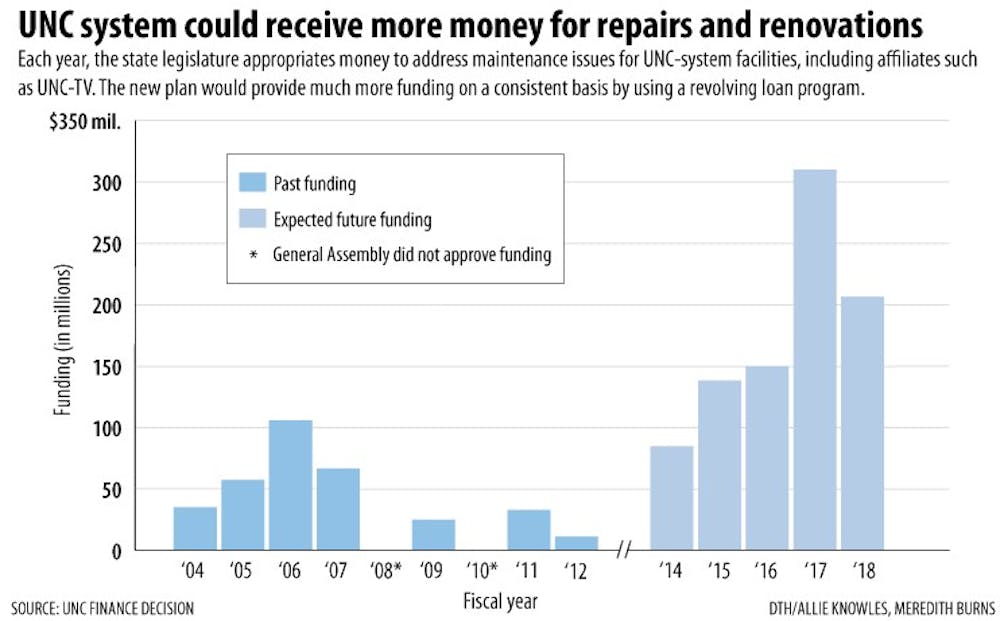“During the budget crisis there was very little money for capital (projects) and so it’s become more of an issue over the last several years,” said Charles Perusse, chief operating officer of the UNC system.
Last year, the UNC system received only $11.1 million in repair and renovation funding, compared to the backlog of more than $2 billion.
And now, after years of an unsteady trickle of funds, a solution might be at hand.
On Wednesday, the steering committee for the UNC-system’s strategic plan accepted a new financial plan developed by Perusse that would produce a steady amount of money each year for repairs and renovations.
Perusse’s plan would generate about $138 million for the UNC system by 2014-15.
“If you have a recurring and consistent stream of money, you can tackle repairs early before they become much more expensive,” he said.
The plan
Perusse recommends borrowing the money by creating an annual revolving loan fund.
The state currently spends about $700 million a year to pay down existing debt, which is roughly 3.5 percent of the state budget, he said.
Though the plan would borrow additional funds, it wouldn’t increase the percentage of the state’s budget reserved for debt payments.
The amount borrowed each year would be capped at 80 percent of the estimated growth in income taxes, remaining in check with the state’s increasing tax revenue.
The state’s debt would also decrease as it is either paid off or refinanced.
To get the day's news and headlines in your inbox each morning, sign up for our email newsletters.
Therefore, the state would still only dedicate about 3.5 percent of the state budget to paying off debt each year.
The money would be split evenly between the UNC system and all other state buildings.
This approach would finally provide a consistent annual amount of repair and renovation funding for the state, Perusse said.
The plan must next be approved at a February meeting of the Board of Governors, and later by the legislature as part of the strategic plan.
Back home
UNC-CH’s deferred maintenance has reached $650 million, said Abbas Piran, director of engineering information services.
Piran said UNC would ideally need between $30 million and $40 million dollars a year to handle its backlog.
“But we’ve never received any repair and renovation (funds) to those levels in the past,” he said.
Perusse said his plan might generate about $20 million to $30 million for UNC-CH, but the details aren’t certain yet.
Both Piran and Bruce Runberg, associate vice chancellor for facilities planning, support Perusse’s initiative.
“If we don’t get the funds on a regular basis, the backlog will continue to grow and there will be regular problems that crop up,” Runberg said.
The problems are often unseen issues with ventilation, plumbing and electricity.
“The more that we’re unable to have that repair and renovation dollar, then maintenance conditions get worse, and there’s more repairs required and so on,” he said.
“It can only get worse from a facilities condition standpoint.”
Contact the desk editor at state@dailytarheel.com.



